7 tips for black and white landscape photography (and why you should try it)
by Alex W.
With the rise of social media has come a neverending influx of nuclear sunsets, pink dawns and cinematic colour toning. Colour, understandably, has become ubiquitous with landscape photography, but there are some very compelling reasons to diverge from the crowd and give black and white landscape photography a try.
Ansel Adams, widely regarded as one of the best landscape photographers in history, worked exclusively in black and white. That should tell you all you need to know.
Of course, Ansel didn't have much of a choice back in those days but, just because we have 14-bit colour on tap these days, that doesn't mean landscape photography in the monochrome format is worthless.
So, before we get to the tips, let's think about why we might want to choose black and white for our landscape photography.
Want more landscape photography content? Check out our Ultimate Guide to Landscape Photography ebook here.
Contents
Why use black and white for landscape photography?
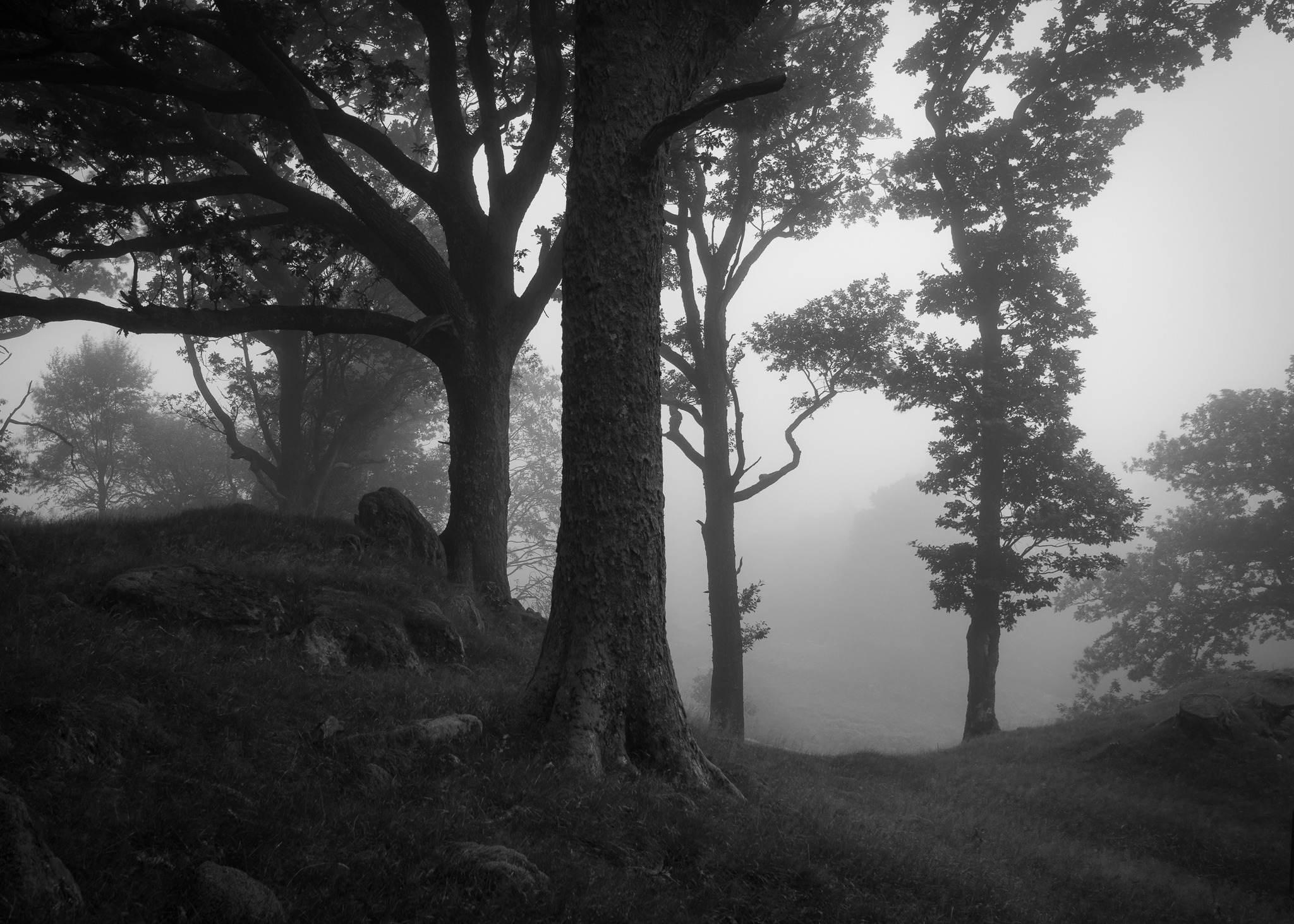
1. It allows your composition to shine
Colour is a distraction.
Is it a good distraction? A lot of the time, yes, but what it often does is take attention away from your carefully crafted composition.
When you remove colour, the composition is promoted to the senior role in the image and is given the space it deserves to become the shining star.
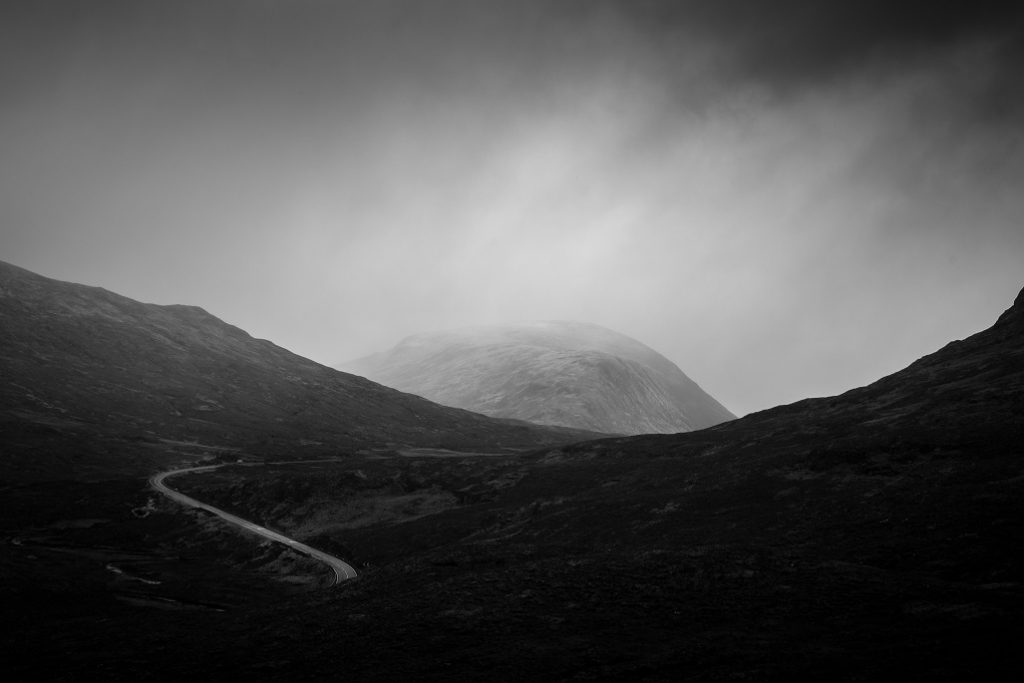
The tonal variation breaks your image up into a series of lines and shapes, and those lines and shapes are in your control as you compose your photograph. Truly interesting compositions can be fully appreciated in black and white without a dazzling array of colours bombarding the viewers' eyes.
And if you don't have a carefully crafted composition yet… well, perhaps it's time to work on that!
2. You can make use of difficult conditions
While the elimination of colour can present some problems, it can also open the door to photographic opportunities that just aren't feasible without black and white.
For example, shooting in bright sunlight is actually recommended if you're doing infrared photography.
Apart from that, there are plenty of 'difficult' conditions where black and white landscapes can be welcomed with open arms. A drizzly afternoon in the forest? No problem. Low cloud obscuring the views? Perfect. A slate-grey sky at the coast? Ideal for minimalism.
We're big at making the most of any conditions here, and black and white landscape photography is perfect for those days when colour simply doesn't add anything to the scene.
3. It expands your post-processing arsenal
Processing black and white landscapes requires a very different approach to your standard colour image.
It's not necessarily harder , but what it will do is teach you new skills and expand your arsenal of post-processing knowledge.
Rather than working to convey accurate and subtle colours you'll instead be focusing on tonal contrast, accentuating shapes and playing with the luminosity values on the HSL panel (providing you took the shot in RAW).
It's another fresh learning experience and your post-processing will be better off for it. You can learn more about post processing and Lightroom here.
4. Your overall photography will improve
Combined, all of the above will lead you down a path to improving your photography.
The inability to fall back upon the tried and tested method of propping up the inadequacies of an image with beautiful colours forces you to think more carefully about other aspects of your landscape photography.
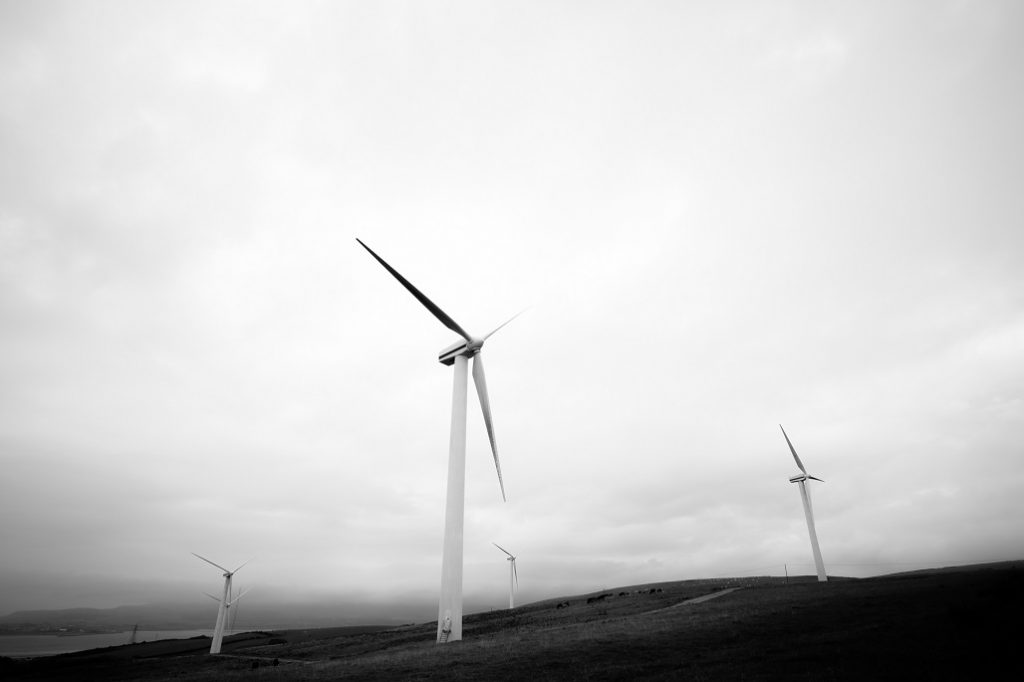
Composition improves, along with your flexibility when it comes to difficult conditions and weather. Finally, your post-processing bow gets another notch in it, and you can even expand further by delving into the world of infrared photography.
In a nutshell, working in the laid-bare world of black and white landscape photography, your skills will improve overall.
Tips for better black and white landscape photography
1. Composition is everything
We've already discussed the importance of composition in black and white landscape photography, but it's something that really can't be overstated.
It's natural that, in normal colour landscape photography, you lean on the colours when composing your image. Of course, you want nature's colours to be shown off in their full capacity, but it can lead to somewhat compromised compositions.
When you're working in monochrome you really want to be paying close attention to all aspects of your composition and utilizing things such as textures, leading lines, shapes, patterns (especially repeating ones) and negative space.
The best way to improve your composition, apart from the basics, is to get out there and shoot. Learn to 'see' in black and white by knowing what tones each real world colour carries when converted into monochrome. For example, that grassy ledge on the side of a cliff could, when converted, turn into a compositionally pleasing triangle due to the difference in tonality between it and its surroundings.
Another great way to study is to examine the work of some of the best black and white landscape photographers out there, such as Ansel Adams, Michael Kenna or, one of my personal favourites, Takeshi Mizukoshi.
2. Shoot in black and white mode (but still shoot RAW)
Many landscape photographers spend their entire photographic career shooting in colour before converting to black and white in post processing.
Hell, even those specifically aiming for a black and white image don't make use of the black and white feature in their camera settings.
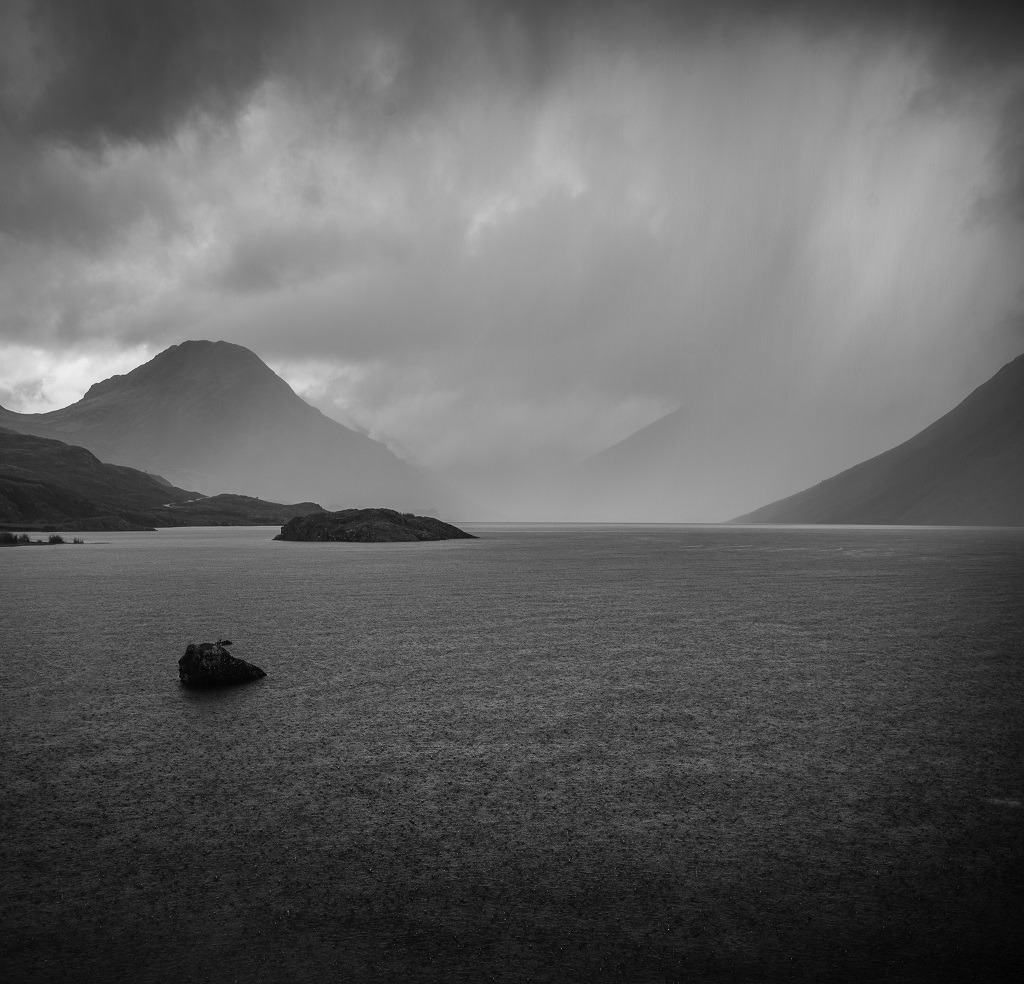
This, in my experience, is a swift path to unexpected surprises. I was constantly blindsided by how certain colours translate into black and white, but by switching my camera to monochrome mode I was able to start 'seeing' in black and white while in the field.
Using this mode in DSLRs means you can playback your images and they will display in black and white, while mirrorless cameras go one step further and allow you to see the black and white representation in real time through the EVF.
Important note: Remember to still shoot in RAW format though. This will mean your image is actually stored with all the colour data intact, just in case you change your mind later and want to use a colour version.
3. Make use of filters
I suggest making use of filters in all forms of landscape photography, but in black and white landscape photography I emphasize that point even more.
A carefully selected filter can completely transform a monochrome image and turn it into a very good, well composed shot into something breathtaking.
Circular Polarizing filters , for example, can render a clear blue sky almost black when converted to black and white, enhancing important features such as contrast and drama. Obviously they also continue to do their job of reducing glare and atmospheric haze as well.
Neutral Density filters , meanwhile, are the path to those minimalist black and white seascapes that are so calming to look at and are the perfect way to make use of those overcast, otherwise dreary days. OF course, they are still useful for scenes involving moving clouds or waterfalls as well.
4. Textures, tones and contrast are key
Textures, tones and contrast are all important in regular colour photography, but when the distraction of colour is removed they take on a new level of importance.
These variations in textures and tones are now key compositional tools. Think about what you're trying to achieve with your final image and then base everything else around that.
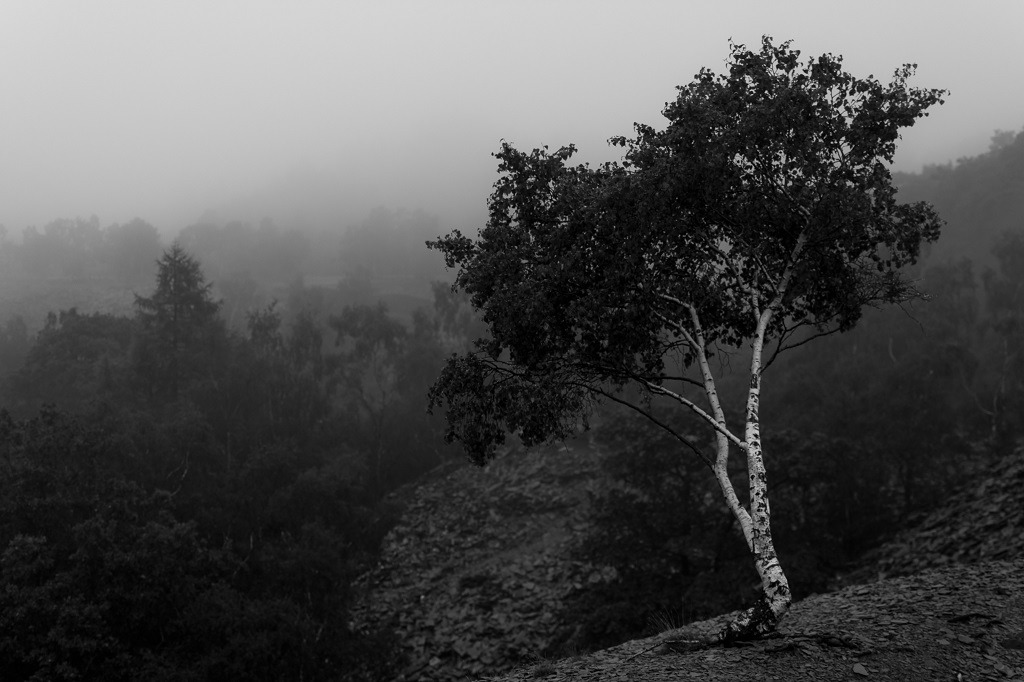
If you're going for a punchy, high contrast scene then look for wide variations in tonality and sharp, defined textures that will allow you to portray the entire spectrum from purest black to brightest white. Or, in simplest terms, be on the lookout for a lot of contrast.
On the other hand, if you're aiming for a high-key minimalist landscape, look instead for the more subtle variations in tonality, such as the smooth transitions of grey in a long exposure of the ocean or the receding waves at the shoreline.
These variations in textures and tones can be found in all sorts of places. For example, many man-made structures end up contrasting massively in tonality to the surrounding landscape, such as piers extending into the ocean or pathways winding through a forest.
The key thing here isn't to tell you where to find textures and tones - the opportunities will present themselves readily enough - but instead to encourage you to think carefully about the effect they'll have on your final image.
5. Use the conditions to your advantage
We've already talked about how some of the less well-received weather and lighting conditions are actually beneficial to black and white landscape photography, but obviously not all conditions are suited to all types of black and white photography.
My best tip would be for you to base your entire approach to photography around the conditions. Think about your final image before every shutter click and ask yourself: " Will this image reflect the conditions?"
Some conditions, such as stormy skies and dramatic lighting, lend themselves to striking, high contrast black and white shots where you want an abundance of deep blacks and bright whites present.
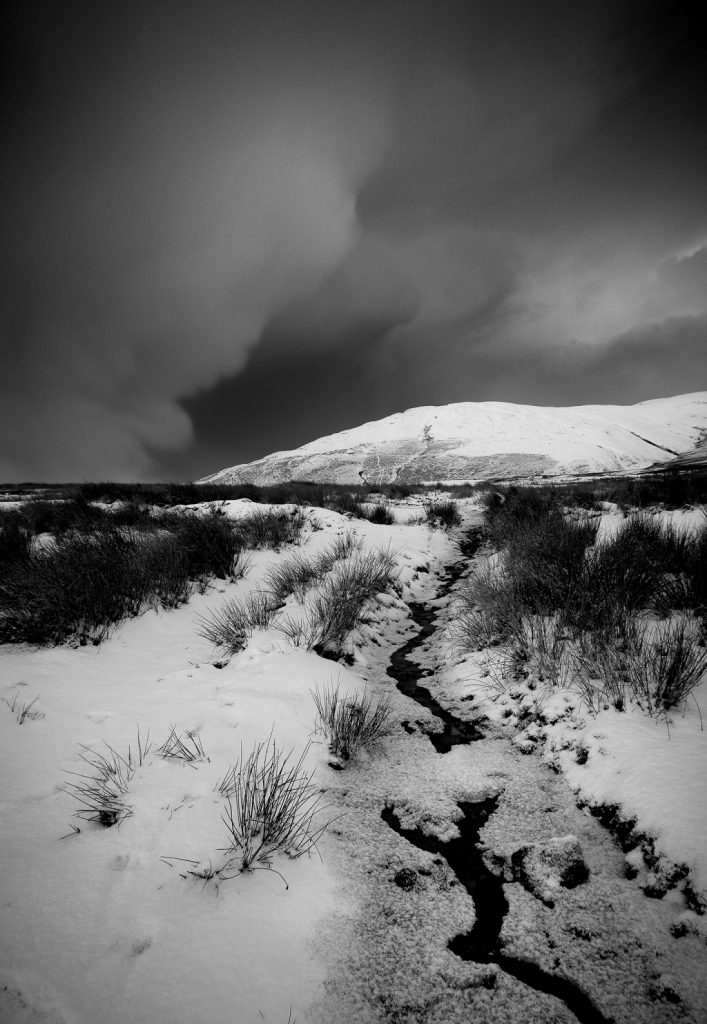
Others, such as a drizzly, misty wander around a forest, are more suited to subtler approaches utilizing gradual transitions between light and dark.
Yet more conditions look better when approached with a low contrast (low-key or high-key) idea in mind. A long exposure against a slate-grey sky is the obvious minimalist scene here, but it also works when photographing lone subjects in thick mist or fog. These conditions are geared towards the accentuation of serenity and mystery, so heavy use of negative space (providing the mystery) and the use of bright greys and whites with subtle tonal contrast (providing the serenity) is a great combination.
6. Try infrared photography
Infrared photography opens up a whole new world of possibilities where you'll be begging for those previously un-photogenic days of harsh midday sunlight and clear blue skies.
Standard cameras are fitted with an infrared filter that blocks almost all infrared wavelengths and only allows the light from the visible part of the spectrum through to the sensor. Infrared photography flips that on its head, blocking visible wavelengths while recording the infrared spectrum.
-
Hoya 72mm RM-72 Infrared Filter
- Hoya 72mm R72 Infrared Filter
- English (Publication Language)
You can either get your hands on a camera specially converted for infrared photography or you can use an infrared filter such as the one above. The filter is obviously the cheaper option, but be aware that it will lengthen exposure times considerably.
The magic of infrared black and white photography is how nature transforms. Blue skies turn almost black and introduce a host of drama, while green foliage such as trees such a ghostly white to give that high contrast look.
It's a very interesting direction to head in and, while I'm not too experienced in it myself, it is something I absolutely love experimenting with.
It also means that pretty much every day is suitable for some form of landscape photography, whether that be colour, black and white or infrared.
7. Don't hold back in the digital darkroom
When working in colour I often urge photographers to go easy on the post production. We've all seen more than enough of the saturation slider and, while that nuclear sky may get you a few Likes on Instagram, it's not entirely necessary.
However, with black and white landscape photography I will often urge people to ignore those instincts and push it a little further.
Get those blacks properly dark and don't worry about a few blown highlights. Real life is full of unfathomably dark shadows and white-hot light, so why should you be constrained to a million subtle variations of medium-grey in your photography?
Push it a little bit further and the chances are you'll end up with a more striking image.
Share this on Pinterest
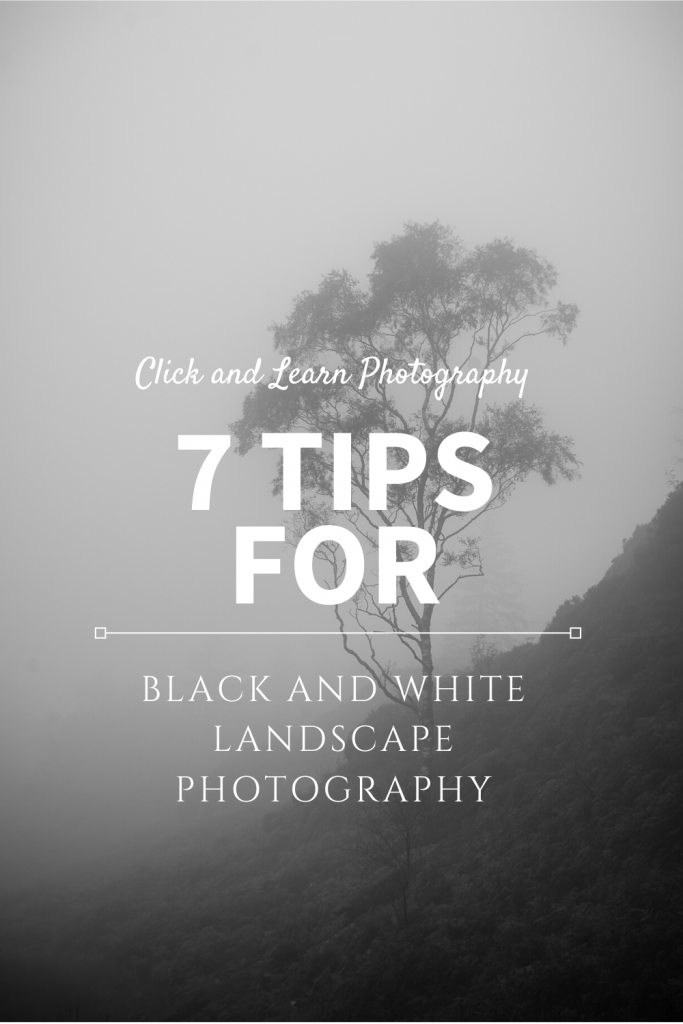
More from Click and Learn Photography
5 must buy lenses for your Nikon
5 must buy lenses for your Canon
10 must buy lenses for Fujifilm X Series
11 best external hard drives for photographers
15 best landscape photographers to follow
 |
 |
 |
 |

About Alex W.
Alex is the owner and lead writer for Click and Learn Photography. An avid landscape, equine, and pet photographer living and working in the beautiful Lake District, UK, Alex has had his work featured in a number of high profile publications, including the Take a View Landscape Photographer of the Year, Outdoor Photographer of the Year, and Amateur Photographer Magazine.
Thoughts on "7 tips for black and white landscape photography (and why you should try it)"
 |
 |
 |
 |
You can Get FREE Gifts. Furthermore, Free Items here. Disable Ad Blocker to receive them all.
Once done, hit anything below
 |
 |
 |
 |